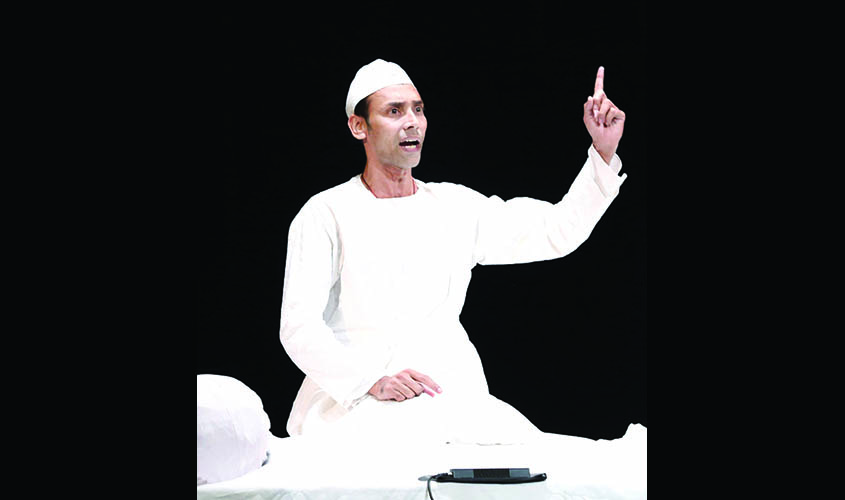The Persian word dastango means storyteller, but it also refers to a larger tradition of oral storytelling, dastangoi, which gained popularity in the Mughal era. In our time, the form is witnessing a modern revival, thanks to the efforts of dastangos like Poonam Girdhani and Rajesh Kumar, of Dastan Collective, who performed Dastan-e-Irfaan-e-Buddha (Life Story of the Buddha) at the Stein Auditorium at Delhi’s India Habitat Centre on 22 May.
It was a two-session event, each approximately 40-minute long. Completely immersed in their narration, the two dastangos commanded undivided attention from the audience, who gave the performers a standing ovation towards the end.
The dastan starts with an interesting Jataka tale of Buddha and his disciple Anand as they travel across a jungle. At some point during their walk, Buddha picks up a few leaves. “Do I have all the leaves of the forest in my hand?” he asks. It surprises Anand, who says, “What are you saying, lord? It’s such a huge jungle and it is autumn, how can you have all the leaves in your palm?” It is then that Buddha says, “Likewise, there are many truths lying around, I’m giving you whatever I could grab in my palm.” It was in the same manner that dastangos Poonam and Rajesh picked up valuable lessons from Buddha’s life and presented those in the form of Dastan-e-Irfaan-e-Buddha.
Dastangoi is a 13th-century oral storytelling form. It reached its prime in the Indian sub-continent in the 19th century and is said to have died with the demise of Mir Baqar Ali, a prominent 19th-century dastango, in 1928. It was only in 2005 that the form received a new lease of life. A number of young artistes have contributed to this, creating a new audience base for an almost forgotten dramatic form. Thousands of dastangoi shows have been performed in India and abroad since then.
In the last five years, Poonam and Rajesh, along with other members of their storytelling group, have organised and performed a range of such shows: including Dastan Raja Vikram Ke Ishq Ki, based on King Vikramaditya’s stories of love and heartbreak; Dastan Alice Ki, based on Alice in Wonderland by Lewis Carroll.
It’s common for dastangos to seek their material in history, literature and mythology. But the best of their narratives are a mix of these three elements. At the Delhi event, one of the dastans was about how four large earthen pots full of gold were found in four corners of India at the time when Gautama Buddha was born. The Buddha’s growth from childhood to adulthood was compared to the phases of moon as it becomes a chaudhvin ka chand (the beautiful full moon).
Poonam says that in the past 15 years the word dastan itself has become quite popular. People now use it interchangeably with the word story. But a dastan is as much a story as it is a lesson.
“What I learnt about the Buddha was how he practiced meditation. Nowadays, we want an empty and silent room, but for him, meditation was about being present in the moment; even when you’re eating, you should experience each morsel, or when you’re walking, you should be aware of your movement,” she says.
Poonam says that one skill that every aspiring dastango must have is a command over language. For all its folk appeal, dastangoi is actually a classical form and it requires total commitment from aspiring performers. A dastango should be well versed not only with literature but also with science, geography, history and various other fields. It’s only an informed storyteller who can tell an engaging tale.
The growing popularity of the art form can also be attributed to the efforts Poonam and her fellow dastangos have been making to reach out to the youth, by holding regular workshops—in schools across India—that acquaint them with this unique way of storytelling.
“We have also performed globally, in countries like the USA, Pakistan, Afghanistan. But in India many people still are not aware of this art form. So in order to popularise it, our collective is organising workshops in schools to motivate school children to take up this art form.”
Dastan Collective, of which Poonam is a member, is also hosting a dastangoi festival from 10-13 July at Delhi’s Akshara Theatre. The founder of the group, Mahmood Farooqui will be directing all the dastans at this festival.

